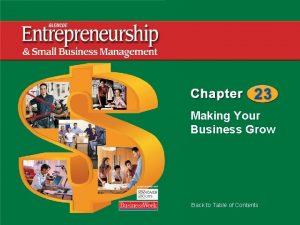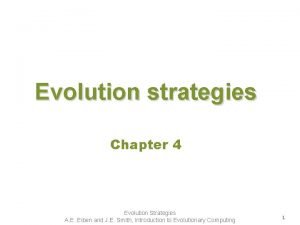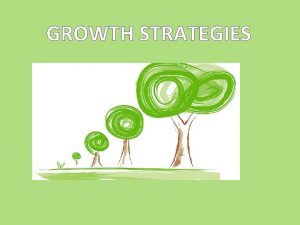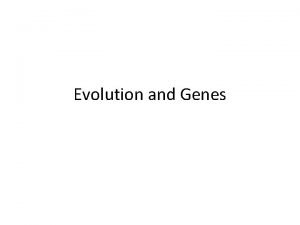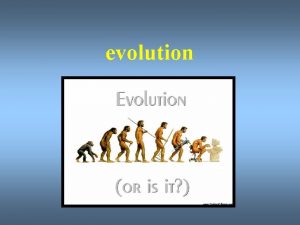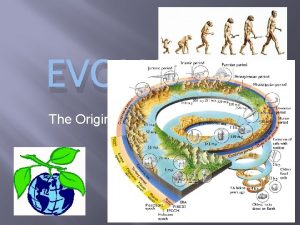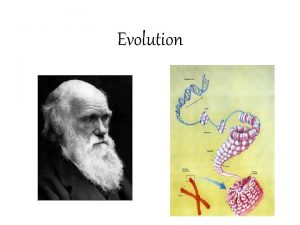Growth and Evolution 2 Strategies for Growth The









- Slides: 9

Growth and Evolution 2 Strategies for Growth

• The Ansoff matrix A common business strategy for growth is to move into growth markets and develop marketing strategies to enable them to exploit this market growth. • This strategy for growth is often expresses in corporate objectives. • Growth may be in the form of increased sales, greater profit, increased capital or more employees. • Growth strategies may not be suited to all businesses however, for example in shrinking markets, objectives may be to maintain previous sales levels or maybe downsize operations to focus on smaller, more profitable market niches, and withdraw from certain operation or market sectors.

Ansoff Matrix • The Ansoff matrix is a useful tool for business aiming at growth. • Definition: A model, which identifies growth strategies for businesses based on an analysis of their products and markets • The matrix shows four possible combinations of marketing strategies.

Ansoff Matrix Existing Product New Product Existing Market penetration Product Development Low risk Medium risk New Market Development Medium risk Diversification High Risk

Ansoff Market penetration Growth in existing markets with existing products Increase brand loyalty e. g. Reward points Increased product usage e. g. Maxi size Mc. D Increase frequency of usage e. g. Cornflakes for a meal other than breakfast • Product development • Producing new or modified products in existing markets e. g. VW Golf. • Cereal bars to extend traditional morning cereals into any-time snack market. • • •

Ansoff • Market development • Marketing existing products in new markets e. g. a retailer expanding his stores to new areas or countries • Diversification • Development of new products for new markets. Enables a business to move away from reliance on existing markets and products and so reduce risk. • However diversification also takes a business outside its area of expertise. It may also divert attention and resources away from core products. E. g. Virgin diversification into financial services and trains may be examples of this strategy.

Ansoff • Business risk increases with new products and markets. The closer a business stays to its existing market, the lower the risk. As it moves away from these known areas, the risk increases. • As a result, Ansoff Matrix indicates that the least risky strategy is market penetration, as both market and product are known. • With both product development and market development the risk is increased. Medium Risk • Diversification is the most risky strategy- here both product and markets are new to the business, but rewards are potentially greatest. • Task: Hoang q 1. 7. 8

Porter’s Generic strategies • Michael Porter defined the way in which businesses can gain competitive advantage over and above its rivals to ensure that profits are not eroded by copying. • 1. Cost leadership. If a firm becomes the lowest cost supplier of a product, competitive advantage can be retained, and yet the firms remains highly profitable, as they do not compete with other firms that offer higher quality. Examples are Ikea and Mc. Donalds, and Ryan air. • 2. Differentiation. When a firm is able to differentiate it’s products from competitors producing mass-market goods, so enabling differentiation by branding or distinctive packaging to make the product seem unique, and focusing on Quality rather than price, it enables the firm to charge a premium price and earn higher profits. Examples are BMW, Mercedes, Apple, and Nike. It is an expensive strategy to maintain. • 3. Focus occurs when a firm targets a niche segment of a market. Examples are found in luxury goods such as Rolex watches, Porsche, and Exclusive fashion clothing brands. These businesses are highly profitable due to the high prices charged for their products.

Porter • Porter argues that it is not possible in the long run to adopt a mixture of these strategies • i. e. A firm cannot maintain high quality image and price leadership at the same time, so managers need to concentrate on a specific strategy. • Task: Hoang q 1. 7. 7 p 131
 Most embryonic industries emerge from
Most embryonic industries emerge from Intensive integrative and diversification growth strategies
Intensive integrative and diversification growth strategies Intensive integrative and diversification growth strategies
Intensive integrative and diversification growth strategies Family business growth strategies
Family business growth strategies Membership growth strategies
Membership growth strategies Define growth analysis
Define growth analysis Ground tissue
Ground tissue Primary growth and secondary growth in plants
Primary growth and secondary growth in plants Vascular ray
Vascular ray Kontinuitetshantering i praktiken
Kontinuitetshantering i praktiken


